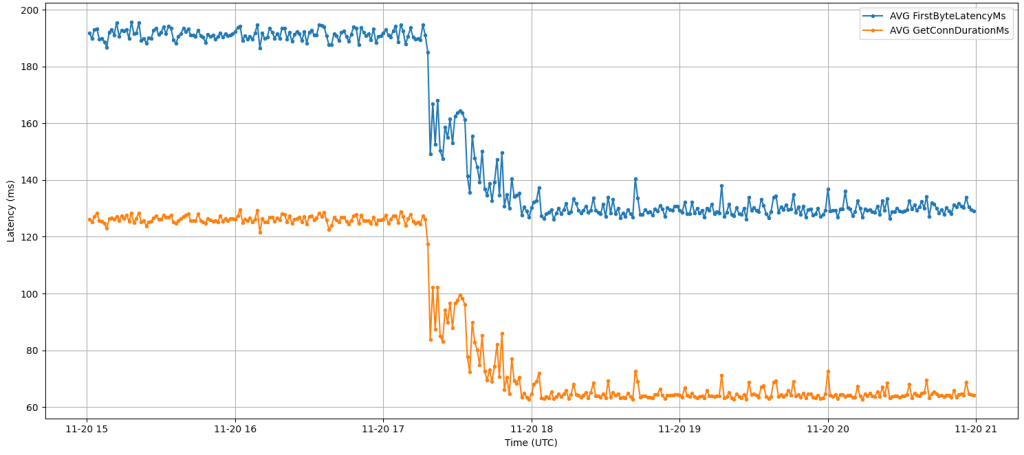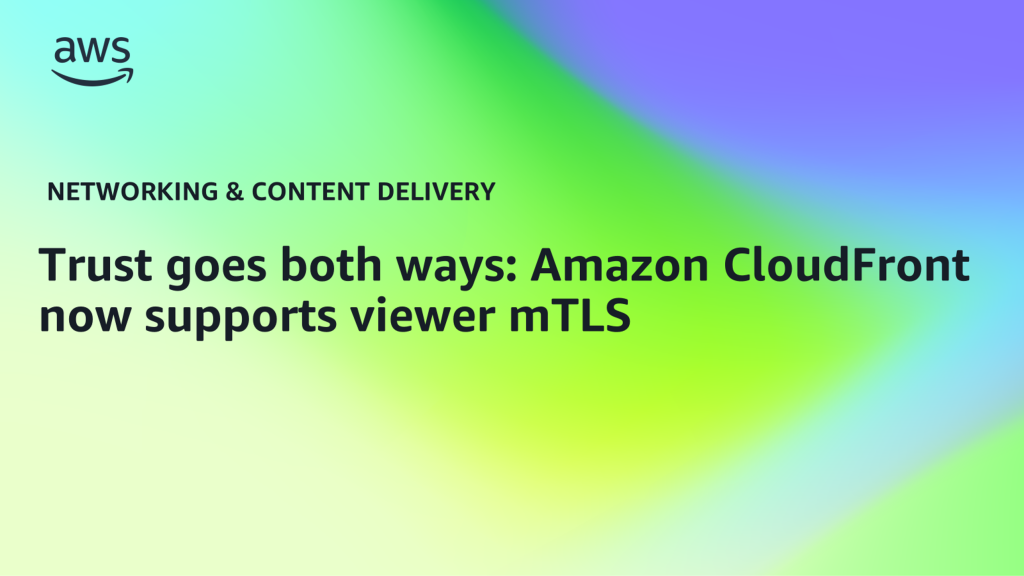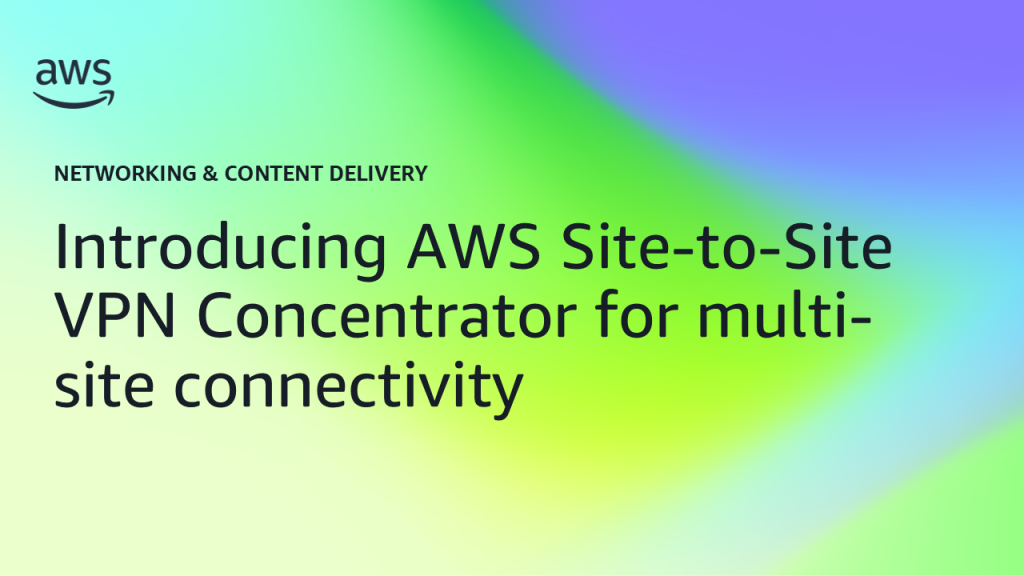Networking & Content Delivery
Amazon CloudFront: Delivering millisecond performance to global audiences
Users of today’s web applications expect instant responses, seamless interactions, and flawless experiences, no matter where they are located. Even the slightest delay can impact user engagement. Delivering content within milliseconds is a business imperative for modern web applications serving global audiences, whether it’s an e-commerce platform processing millions of transactions or a streaming service […]
Trust goes both ways: Amazon CloudFront now supports viewer mTLS
Starting today, Amazon CloudFront supports viewer mTLS authentication from end users to CloudFront, enhancing security for highly distributed and sensitive applications. In modern architectures, securing client-server communication necessitates more than standard TLS, and mTLS extends this model by enforcing bidirectional authentication. This makes sure that both the client and the server verify each other’s identity […]
How AWS improves global connectivity via automated traffic engineering
In our previous post on demystifying Amazon Web Services (AWS) Data Transfer services, we discussed how we designed our global network infrastructure to be highly available, resilient, and performant. In this post, we discuss the AWS approach to Inbound Traffic Engineering (TE). The AWS global network infrastructure operates at a massive scale. In 2024, AWS […]
Introducing Flexible Cost Allocation for AWS Transit Gateway
Today AWS announced Flexible Cost Allocation (FCA) for AWS Transit Gateway, a capability that gives you granular control over how Transit Gateway data processing costs are allocated across AWS accounts, including member accounts within AWS Organizations. With FCA, you configure metering policies for your Transit Gateway that allows you the flexibility to allocate charges to […]
AWS Site-to-Site VPN and eero make remote connectivity for distributed sites simpler
Amazon Web Services (AWS) is working with eero to make it simpler and more convenient for organizations to establish secure connectivity between their remote sites and AWS in just a few clicks. The integration of AWS Site-to-Site VPN with eero’s devices enables organizations to scale site connectivity across many locations faster and more efficient, without requiring […]
Drive application performance with Application Load Balancer Target Optimizer
AWS Application Load Balancer is an HTTP request load balancer designed to provide scalability through load distribution and high availability through target health detection and unhealthy target isolation. Today, we are excited to introduce ALB Target Optimizer, a powerful new feature through which ALB delivers optimal concurrency to each target. In this post, we will […]
AWS Cloud WAN Routing Policy: Fine-grained controls for your global network (Part 1)
Today, AWS announces the launch of AWS Cloud WAN Routing Policy, a new capability that gives customers greater control over how traffic is routed across their global networks. With this feature, customers can implement sophisticated routing controls for optimizing network performance and build more resilient hybrid architectures using AWS Cloud WAN. This post is the […]
Introducing Amazon VPC Regional NAT Gateway
Overview AWS NAT Gateway is a fully managed, highly available, and horizontally scalable Network Address Translation (NAT) service that enables resources in private subnets to initiate outbound connections to destinations outside their subnet using the NAT Gateway’s IP address. These destinations can include resources in the same VPC, different VPCs, the internet, or your on-premises […]
Introducing AWS Site-to-Site VPN Concentrator for multi-site connectivity
AWS announced AWS Site-to-Site Concentrator, a new feature that simplifies multi-site connectivity for distributed enterprises. If you’re managing distributed enterprises with numerous remote sites, such as retail stores, restaurant chains, hotels, or healthcare facilities, VPN Concentrator offers a streamlined approach to multi-site connectivity. In this post, We will walk through the key use cases for […]
Build scalable IPv4 addressing with AWS NAT gateway in regional availability mode, Amazon VPC IPAM policies and Prefix Lists
Today, AWS announced two new features that work together to simplify how you manage public IPv4 addresses at scale: AWS NAT gateway in regional availability mode and Amazon VPC IP Address Manager (IPAM) policies that define a public IPv4 allocation strategy. NAT gateway in regional availability mode automatically expands and contracts across availability zones following […]








